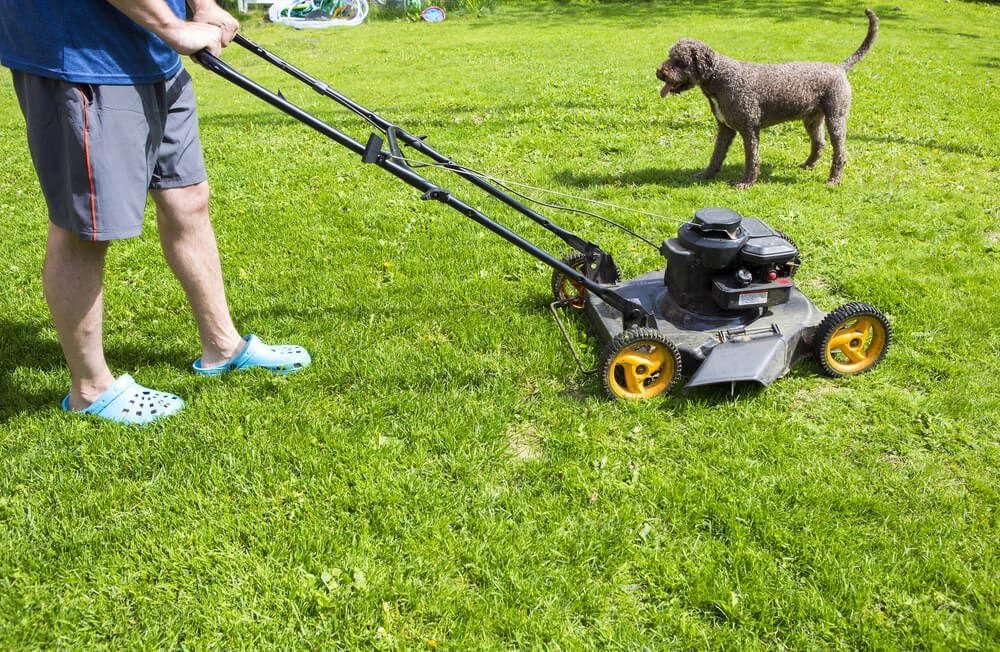Imagine enjoying a sunny day outside, taking care of your lawn, when suddenly you hear a yelp and see your furry friend scurrying away from the noise of your lawnmower. We all know that our pets are like family, and their safety is a top priority. That’s why it’s crucial to take the necessary precautions to protect our beloved companions while mowing the lawn. In this article, we will explore some simple yet effective tips to ensure our pets stay safe and happy during this common household chore.
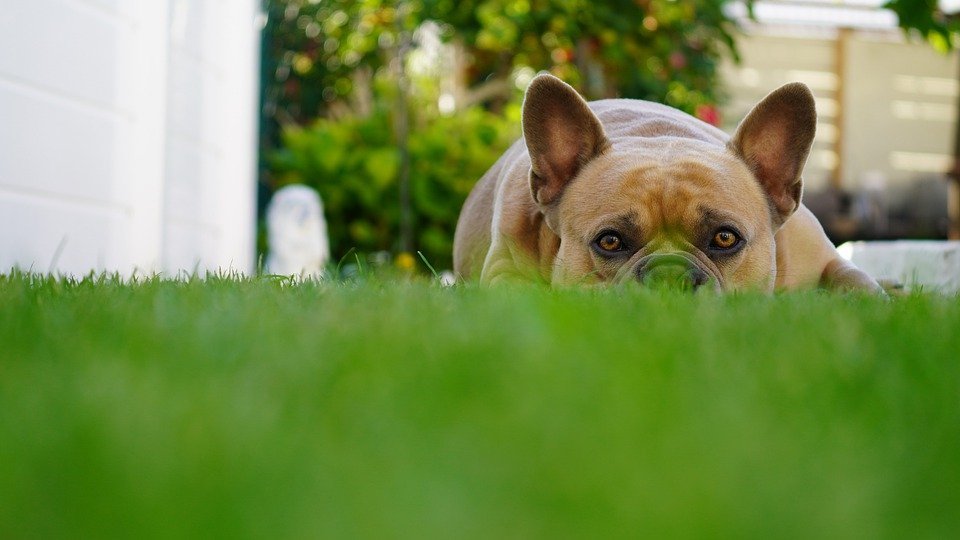
This image is property of geckogreen.com.
Choosing the Right Time to Mow
Consider the Temperature
When it comes to mowing the lawn and ensuring the safety of your pet, it’s important to consider the temperature outside. Extreme heat can be dangerous for both you and your furry friend. In hot weather, try to schedule your mowing sessions in the early morning or late evening when the temperature is cooler. This way, your pet will be less likely to overheat or burn their paws on the hot ground.
Avoid Mowing During Peak Sunlight Hours
Peak sunlight hours, typically between 10 am and 4 pm, can be scorching for your pet’s paws and can cause overheating. If possible, try to avoid mowing during these hours and choose a time when the sun is less intense. By doing so, you’ll not only protect your pet from potential harm but also ensure that they can enjoy their time outside without discomfort.
Schedule Around Pet’s Routine
Consider your pet’s routine when planning your mowing schedule. If your pet has a regular feeding or playtime routine, try to avoid mowing during those times to minimize stress and interruptions. By working around your pet’s routine, you’ll create a more harmonious environment for them to enjoy their outdoor time while you take care of the lawn.
Preparing Your Pet
Secure Your Pet Indoors
Before you start mowing, it’s crucial to secure your pet indoors. This will prevent any accidents or injuries that may occur while operating the lawn mower. Create a safe and comfortable space for your pet inside your home, such as a designated room or their crate, and make sure they have their favorite toys, water, and a cozy bed. By keeping them securely indoors, you can focus on mowing without worrying about their well-being.
Provide a Safe Distraction
To keep your pet entertained and occupied while you mow, provide them with a safe and engaging distraction. Engage them with puzzle toys, treat-dispensing gadgets, or a long-lasting chew to keep them mentally stimulated and less focused on the outdoor noise. By keeping their attention diverted, you’ll decrease the chances of them becoming anxious or stressed by the sound of the mower.
Use Positive Reinforcement and Training
Before you begin mowing, ensure that your pet is familiar with basic commands such as “sit,” “stay,” and “come.” Use positive reinforcement techniques by rewarding them with treats and praise when they obey these commands. This training will be helpful in case your pet accidentally gets out of the secured area while you’re mowing. By having proper obedience skills, you can safely guide them back indoors without any dangers or disturbances.
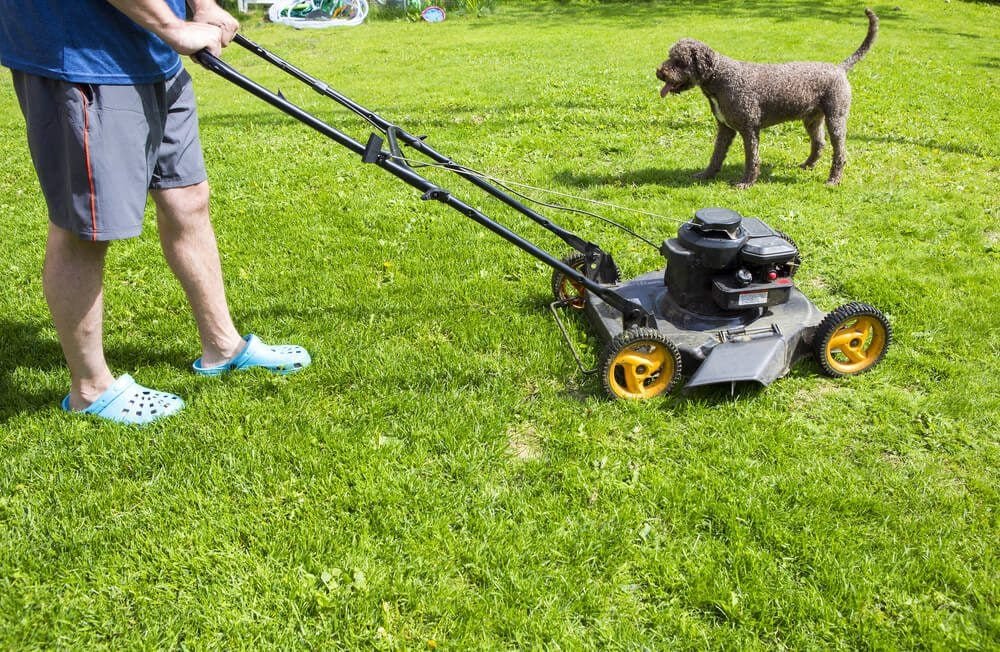
This image is property of www.familyhandyman.com.
Clearing the Lawn
Remove Debris and Objects
Before you start mowing your lawn, take the time to carefully remove any debris or objects that could pose a threat to your pet’s safety. Check for sticks, rocks, or any other potential hazards that could be hidden in the grass. By clearing the lawn of these objects, you’ll ensure a safer mowing environment and reduce the risk of injury to both you and your pet.
Check for Hiding Spots
Pets, especially cats, love to find hidden spots in the yard where they might feel secure or curious to explore. Before firing up your mower, make sure to check under bushes, behind flower beds, or any other potential hiding spots. By doing so, you’ll avoid any accidental encounters and ensure that your pet remains safe during the mowing process.
Ensure the Yard is Free from Chemicals
Take a moment to inspect your yard for any chemical spills or applications, such as fertilizers or pesticides. These substances can be toxic to pets if ingested or absorbed through their paws. Ensure that any chemicals have been safely stored away and that the areas where they were applied are no longer accessible to your furry companion. Prioritizing their safety by keeping them away from potentially harmful substances is crucial for their well-being.
Using the Right Lawn Mower
Choose Pet-Friendly Lawn Mower Features
When selecting a lawn mower, look for features that prioritize pet safety. Some mowers are designed with a pet shield or guard to prevent debris from being thrown toward your furry friend. Additionally, consider mowers with adjustable cutting heights, allowing you to keep your grass longer and softer. This can minimize the impact if your pet were to accidentally step on the mower’s path.
Opt for Electric or Cordless Mowers
Electric or cordless mowers are often quieter than their gas-powered counterparts. This can be less stressful for pets who are sensitive to loud noises. Electric mowers also eliminate the release of harmful emissions, making them a safer and more eco-friendly option for both you and your pet.
Consider Noise Levels and Vibrations
Pets have sensitive hearing, so it’s important to consider the noise levels and vibrations produced by your lawn mower. Look for mowers with lower decibel ratings to minimize noise-related stress for your pet. Additionally, models with reduced vibrations can help create a more comfortable environment. By choosing a mower with these features, you’ll make the mowing experience more tolerable for your furry friend.
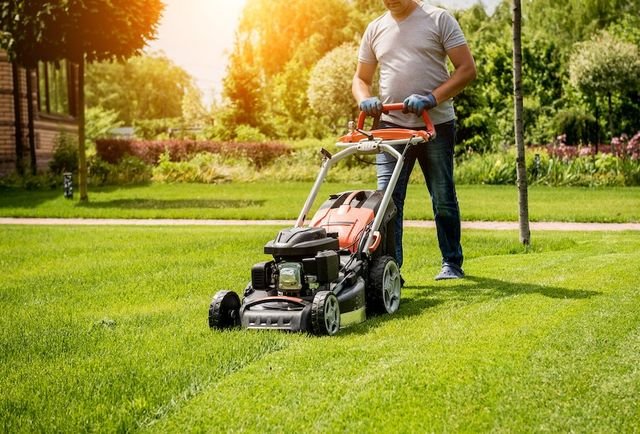
This image is property of lirp.cdn-website.com.
Creating Boundaries
Install Physical Fences or Barriers
One effective way to protect your pet while mowing the lawn is to install physical fences or barriers. These boundaries will keep your pets safely away from the area you are mowing. Ensure that the fencing is secure and high enough to prevent any escape attempts by your curious pet.
Use Visual Deterrents
Visual deterrents can be a helpful tool to keep your pet away from the mowing area. Brightly colored flags or signs can act as visual cues, effectively signaling to your pet that the area is off-limits. Place these deterrents strategically around the perimeter of the mowing zone to reinforce the boundary and discourage your pet from venturing too close.
Utilize Pet-Friendly Repellents
Another way to establish boundaries and discourage your pet from entering the mowing area is by using pet-friendly repellents. There are environmentally safe and non-toxic repellents available that emit smells or create barriers your pet may find unpleasant. Consult with pet retailers or your veterinarian to find the most suitable repellent for your particular pet.
Supervising the Mowing Process
Keep Constant Visual Contact
While mowing the lawn, it is essential to maintain constant visual contact with your pet. Regularly check their location and behavior to ensure they remain safe. By keeping a watchful eye on your pet, you can quickly intervene if necessary and address any potential risks or hazards that may arise.
Maintain a Safe Distance
When operating a lawn mower with your pet nearby, make sure to maintain a safe distance. The noise and movement of the mower can sometimes startle animals, leading them to act unpredictably. Stay a reasonable distance away to prevent accidental collisions or scares that may cause your pet to run towards the mower.
Monitor Pet’s Behavior
Pay close attention to your pet’s behavior during the mowing process. Look for signs of stress, anxiety, or distress, such as pacing, excessive panting, or attempts to escape. If you notice any concerning behavior, it may be necessary to pause or adjust your mowing routine. Prioritizing your pet’s well-being and making necessary adjustments will help maintain a safe environment for them.
This image is property of greenpal-production.s3.amazonaws.com.
Handling Encounters
Stop Mowing if Pet Approaches
If your pet approaches you while you’re mowing, it is crucial to stop the mower immediately. Continuing to mow while your pet is in close proximity is risky and can lead to severe injury. Take a moment to assess the situation, ensure your pet is safe, and move them to a secure area indoors or away from the mowing zone.
React Calmly and Gently
In the event of an encounter between your pet and the lawn mower, it’s important to remain calm and composed. Sudden movements or panicked reactions can further agitate or frighten your pet. Instead, maintain a soothing and gentle tone, ensuring that they feel reassured and safe. By reacting calmly, you can help minimize their stress and prevent any escalation of the situation.
Redirect Pet’s Attention
If your pet becomes fixated on the lawn mower or shows signs of anxiety, try to redirect their attention. Use their favorite toy or treats to distract them from the mowing process. Engaging them in a positive and enjoyable activity can help shift their focus away from the potential stressors and towards a more relaxing and fulfilling experience.
Addressing Post-Mowing Concerns
Scan the Lawn for Any Hazards
After you have finished mowing, carefully inspect the lawn for any potential hazards that may have surfaced during the process. Look for loose debris, uncovered objects, or areas of uneven terrain that could pose a risk to your pet. By addressing these concerns promptly, you can ensure that your pet’s playtime and relaxation in the yard remain safe and enjoyable.
Clean Your Pet’s Paws and Coat
Before allowing your pet back into the mowed area, take the time to clean their paws and coat. Grass clippings, dirt, and debris can cling to their fur and paws, potentially causing discomfort or itching. Use a damp cloth or pet-friendly wipes to gently clean their paws and brush their coat to remove any debris. This will help keep them comfortable and prevent any potential allergic reactions or irritations.
Offer a Shaded and Relaxation Spot
Mowing the lawn can be a tiring and sometimes stressful experience for your pet. Afterward, it’s important to offer them a shaded and relaxation spot where they can rest and recover. Set up a cozy area with fresh water, a comfortable bed, and some toys in a shady location. This designated spot will serve as a safe haven for them to unwind and enjoy their time in the yard.
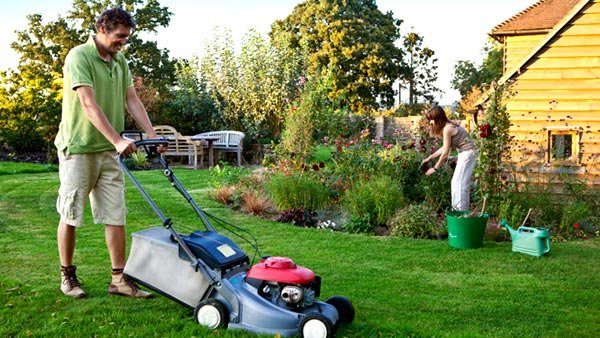
This image is property of blog.cinfin.com.
Seeking Professional Help
Consider Hiring a Professional Lawn Care Service
If you’re concerned about mowing your lawn safely with your pet around, consider hiring a professional lawn care service. These professionals have experience in working around pets and can ensure your lawn is properly maintained while prioritizing your pet’s safety. By entrusting the job to experts, you can have peace of mind knowing that your pet is in good hands.
Consult with a Veterinarian
If you have any specific concerns or questions about mowing the lawn safely with your pet, it’s always a good idea to consult with your veterinarian. They can provide you with tailored advice based on your pet’s unique needs, behavior, and health conditions. Your veterinarian may also be able to recommend specific tips or precautions to take to ensure the well-being of your furry friend during the mowing process.
Join Pet Safety Organizations and Communities
Joining pet safety organizations or online communities can provide you with a wealth of knowledge and support regarding lawn safety and pet care. These platforms often share valuable tips, experiences, and resources related to mowing the lawn with pets. By participating in these communities, you’ll have an opportunity to connect with like-minded individuals and gain further insights into creating a safer environment for your pet.
Educating Others
Spread Awareness in Your Community
One of the most effective ways to promote pet safety while mowing the lawn is by spreading awareness in your community. Share your knowledge and experiences with neighbors, friends, and family members. Organize community workshops or seminars to educate others about the importance of pet safety during lawn care activities. By working together, you can create a culture of responsible pet ownership and prioritize the well-being of pets in your community.
Teach Children about Pet Safety
Children are often curious about outdoor activities, including mowing the lawn. It’s crucial to teach children about pet safety during these activities to prevent accidents or incidents. Explain the potential dangers that lawn mowing can pose to pets and educate children on the importance of keeping a safe distance and respecting boundaries. By instilling these values at a young age, we can help raise a generation of responsible and compassionate pet owners.
Encourage Responsible Pet Ownership
Lastly, encourage responsible pet ownership in your community by setting an example through your own actions. Ensure that your pet receives proper training, vaccinations, and regular veterinary check-ups. Emphasize the importance of obedience training and maintaining a safe environment for pets during lawn care activities. By leading by example, you can inspire others to prioritize their pet’s safety and well-being.
By following these comprehensive guidelines, you can ensure the safety of your pet while mowing the lawn. Remember, your pet’s safety should always be a top priority, and taking the necessary precautions and preventative measures will help create a harmonious and hazard-free environment for everyone involved. Happy mowing!

